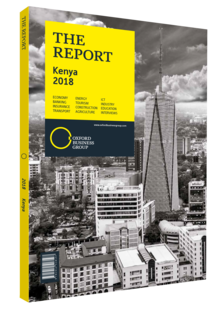Digital transactions are gaining popularity, but cash may remain the preferred option for many Kenyans
Growth in mobile payments reached 8% in 2017, according to the Central Bank of Kenya (CBK). While steady, this was slower than in 2016 and 2015, when industry growth was 19% and 17%, respectively. Industry stakeholders reported that muted consumer spending was partly due to lower-than-expected economic growth.
Growth Market
Despite more subdued expansion, the market has remained robust, with the value of mobile money transactions jumping more than 20-fold from KSh166.6bn ($1.6bn) in 2008 – the first full year the CBK recorded statistics for the segment – to KSh3.6trn ($35.3bn) in 2017. A key driver of this has been M-Pesa, which was launched by local telecoms operator Safaricom in 2007, and allows users to send money, pay bills and apply for loans via SMS.
M-Pesa controlled 81.2% of the mobile money market and had 29.1m subscribers as of the first quarter of 2018. It has also been cited as the key factor behind the rapid increase in Kenya’s financial inclusion, which rose from 26.7% in 2006 to 75.3% in 2016. Kenya now has the highest rate of mobile money penetration in East Africa – at 59% – and the 10th highest in sub-Saharan Africa, according to GSMA Intelligence.
High-End Customers
The segment notably outperforms payment cards, which continue to decline. According to CBK data, the value of card-based transactions dipped by 0.5% to KSh1.39trn ($13.6bn) in 2017, a 9.1% decline from the KSh1.53trn ($15bn) peak in 2013. The number of card transactions similarly eased from 216.2m in 2016 to 215.6m in 2017, well off the record of 338.1m in 2013. Increased uptake of mobile money is likely a major contributor to falling card usage.
Limited access to compatible technology has also been an obstacle to card transaction growth. Despite having 16.6m cardholders, the CBK reports that there are only 35,000 point-of-sale machines in Kenya, with high costs of services preventing broader penetration. Further highlighting accessibility issues, the Financial Inclusion Insights 2016 Kenya Annual Report and Survey Data, released in November 2017, found that while 62% of respondents said they lived within 1 km of a mobile money agent, the figure was much lower for banking agents (31%) or bank branches (14%).
To encourage more activity, banks have sought to attract business from the middle- and upper-income segments of the market through higher transfer limits, as mobile money transactions have a daily regulatory ceiling of KSh140,000 ($1370). In February 2017 a partnership of local banks unveiled PesaLink, another mobile money service. With a daily limit of KSh999,999 ($9780), the platform aims to attract higher-value transactions, and users are able to initiate payments from mobile phones, bank branches, ATMs or via the internet.
Cash Dominance
Despite the growth in mobile money and the increasing number of banking options, the use of cash remains key for many. According to the 2016 FinAccess survey released by the CBK, 94.6% of business owners used cash as their main mode of payment, with similarly high levels among casual (94.7%) and agricultural workers (92.8%). Conversely, only 43.3% of regular employees were paid in cash. Willie Kimani, CEO of supermarket chain Naivas, told attendees at a digital payments industry event in March 2018 that cash accounted for more than 60% of the company’s transactions, followed by card (17%) and M-Pesa (16%).
Industry figures have cited the complexity and fragmentation of the digital payments system as a factor underpinning the dominance of cash. The large number of payment options may deter local vendors from investing in the supporting technology, according to Francis Mugane, general manager of integrated digital payments and commerce firm Interswitch. “In terms of back-end and reconciliation, the investment the merchant has to make is very high for [it] to be sustained,” he told a forum hosted by entrepreneurial club Metta Nairobi in March 2018. This also prevents players from capitalising on economies of scale, as they must individually negotiate prices with each partner.
You have reached the limit of premium articles you can view for free.
Choose from the options below to purchase print or digital editions of our Reports. You can also purchase a website subscription giving you unlimited access to all of our Reports online for 12 months.
If you have already purchased this Report or have a website subscription, please login to continue.

